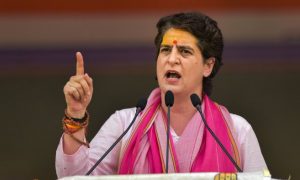OPD stands for Outpatient Department. It’s a crucial part of the healthcare system in India.
About three years ago, merely 5% of health insurance customers were opting for plans inclusive of Outpatient Department (OPD) benefits. This figure has surged to 20%, marking a 4X growth in the last three years, revealed Policybazaar in its latest data assessment.
This trend indicated an increasing preference for comprehensive coverage that extends beyond conventional inpatient services.
What Is OPD?
OPD stands for Outpatient Department. It’s a crucial part of the healthcare system in India, providing medical services to patients who don’t require hospitalisation. In simpler terms, it’s the section of a hospital where patients can receive consultations, diagnoses, and treatments without needing to stay overnight.
OPD services are not just limited to hospitals. They can also be availed at clinics, consultation rooms, and even virtually through telemedicine consultations.
The significance of OPDs in India lies in their role of making healthcare accessible and affordable for a large population. They provide a convenient and cost-effective way for people to get the medical attention they need without the burden of hospitalisation.
OPD coverage is also becoming increasingly important in health insurance plans in India. This coverage helps patients manage the costs of regular doctor visits, diagnostic tests, and medications, which can add up significantly over time.
Some health insurance plans in India now offer coverage for OPD expenses. This can include consultations, diagnostic tests, and medications received on an outpatient basis.
Read More: RBI MPC Next Week: Repo Rate Likely To Remain Unchanged Amid Sticky Food Inflation
Key findings of Policybazaar’s assessment;
- Out of those opting for OPD services, a significant 50% of them actively utilise OPD services included in their plans, showcasing the practical relevance and value of such coverage.
- The 50% of customers who are not utilising the OPD services do so owing to reasons such as low awareness, less requirement and inertia towards preventive healthcare.
- The primary driver behind selecting plans with OPD benefits is the accessibility to doctor consultations and diagnostic tests, cited by 80% of customers.
- Among those choosing plans with OPD benefits, the gender distribution skews towards males, comprising 80% of this demographic.
- The appeal of OPD benefits spans across various age groups, with the majority falling within the 31-45 age bracket (47%), followed by the 18-30 segment (34%).
- Across different tiers, the adoption of OPD benefits remains substantial, with Tier 1 capturing the largest share (45%), followed by Tier 3 (35%) and Tier 2 (20%).
- Certain cities exhibit a higher concentration of customers opting for plans with OPD benefits, with Vellore (12.3%), Tiruvallur (10.9%), and Mathura (10.2%) leading the trend.
Read More: Lawrence Bishnoi Gang Hatched Conspiracy To Kill Salman Khan At His Panvel Farmhouse: Sources
Here’s a detailed comparison of health insurance plans with OPD coverage in the market;

Source: Policybazaar
However, it’s important to note that OPD coverage is not included in all health insurance plans. If you’re considering buying health insurance, be sure to check the plan details to see if OPD coverage is included and what limitations or exclusions might apply.
DISCLAIMER: The views and investment tips by experts in this News18.com report are their own and not those of the website or its management. Readers are advised to check with certified experts before making any investment decisions.





































